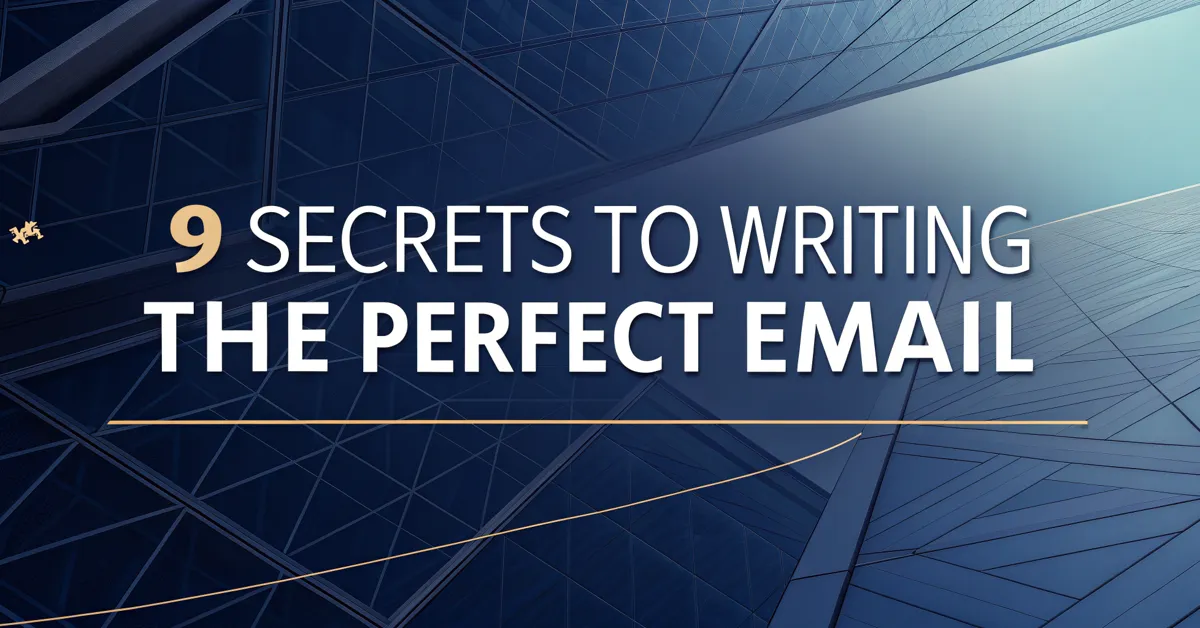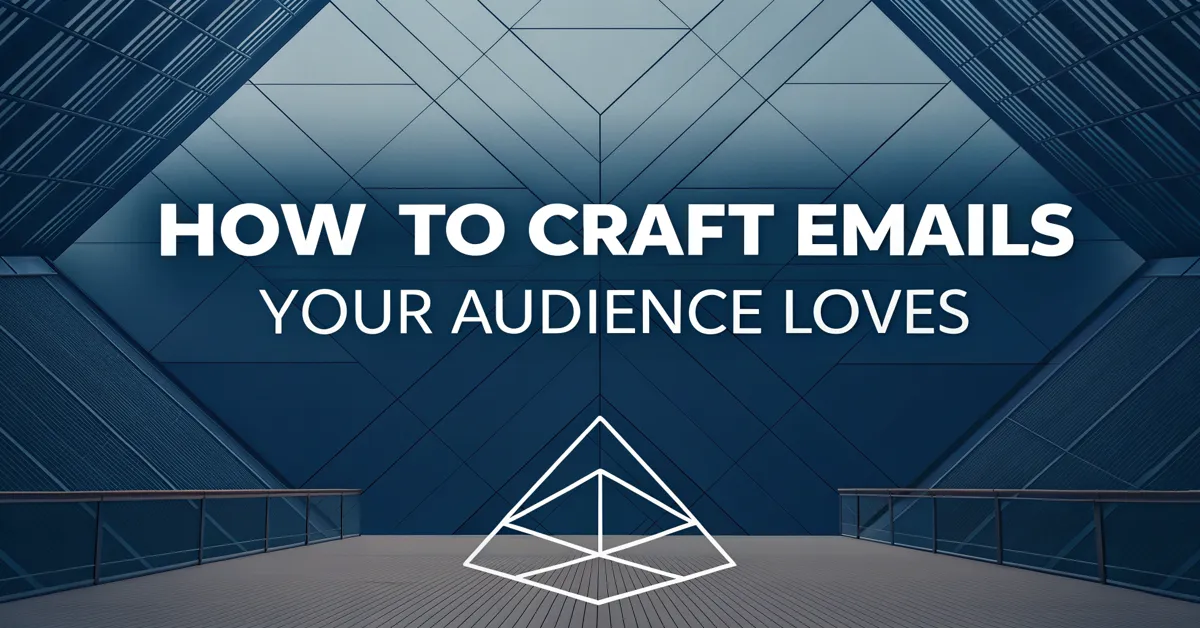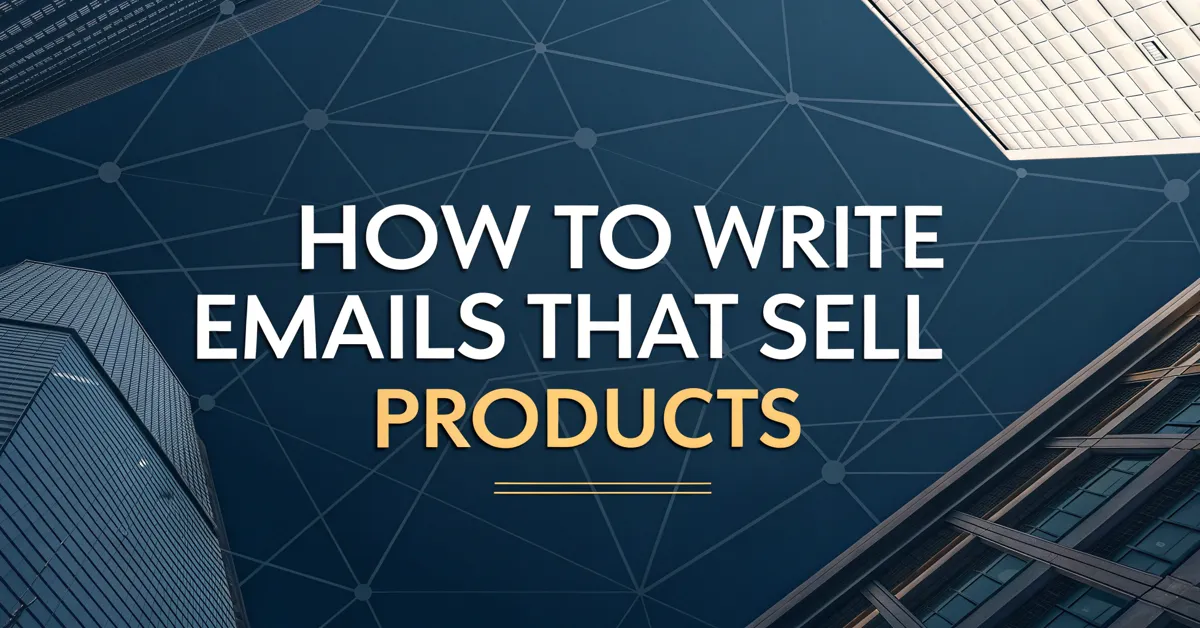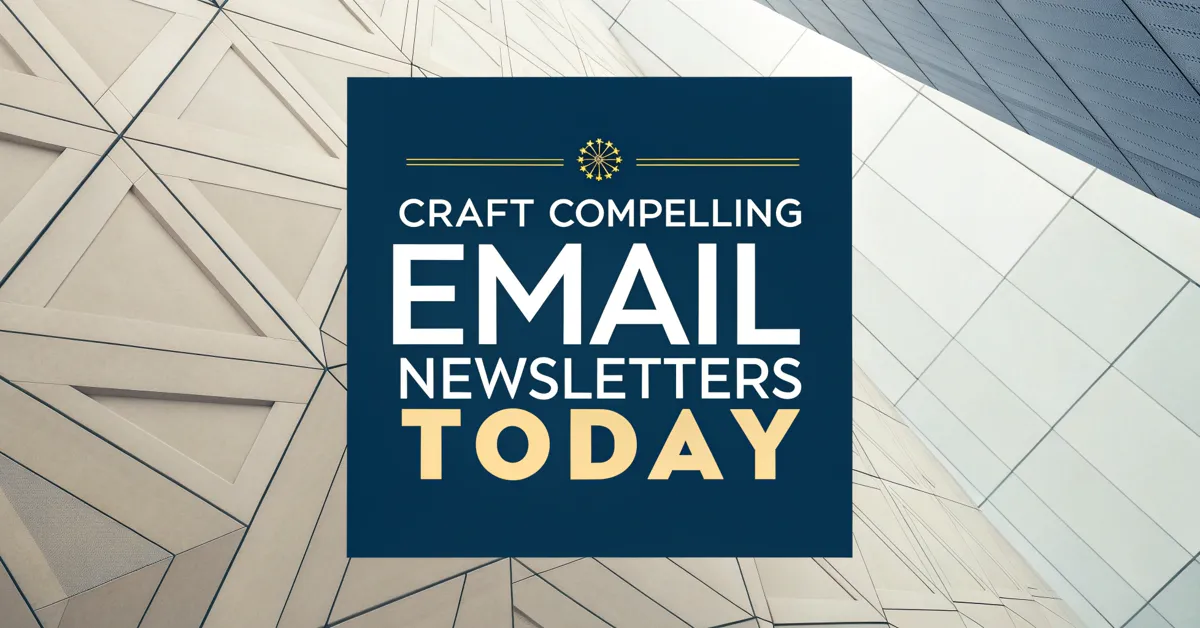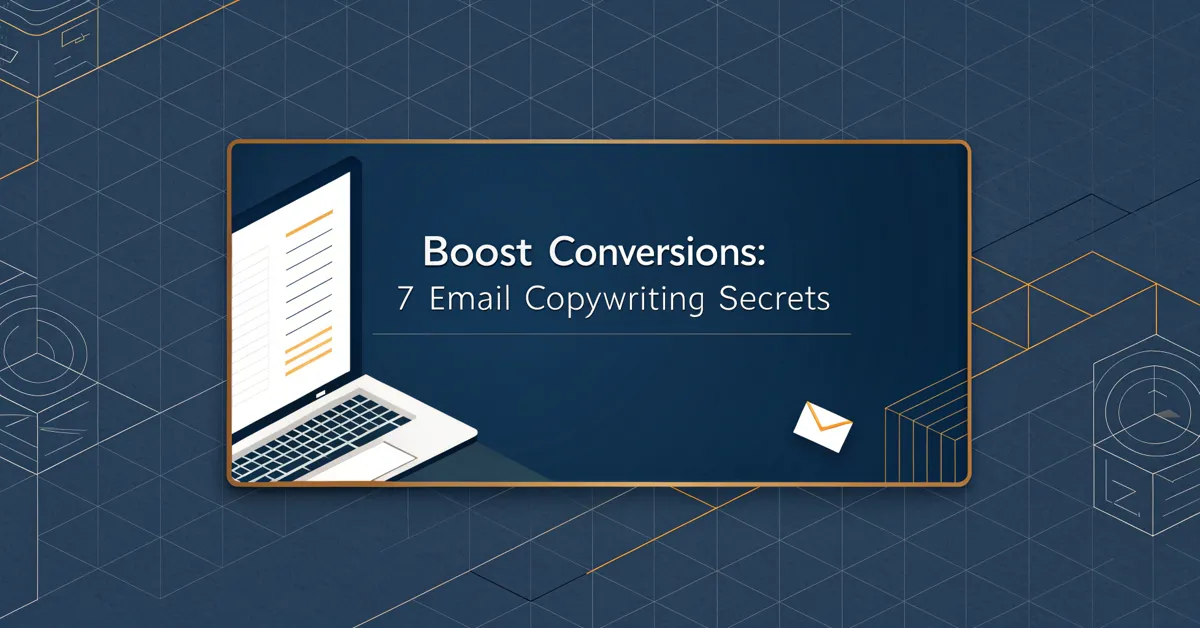Have you ever felt like your emails vanish into the digital void, unread and unloved? It’s a common pain for many copywriters, but what if I told you that crafting emails that captivate and convert isn’t just luck? It’s a science, an art, a set of learnable skills. The following secrets will show you how to take your email writing to the next level. Let’s dive into the details, and learn how to write emails that readers actually want to read.
The Foundation of Great Email Copy
Before we get into the nitty-gritty, it’s key to grasp that great email copy isn’t about you; it’s about the reader. Your words must serve a purpose for them, not just for you. It’s about making a connection, sparking an emotion, and guiding them to take an action. Remember that each email you send is a tiny journey, and your job as a copywriter is to make that journey smooth, engaging, and rewarding.
1. Nail the Subject Line: The Gatekeeper
The subject line is the first, and sometimes the only, thing that a reader sees. It’s the gatekeeper to your email, and if it’s weak, your message may never get a chance. Think of your subject line as a movie trailer – it must make your audience curious and eager to know more. It’s not as simple as writing any catchy phrase; it must be something that resonates with your readers. Here’s how you do that.
- Be Specific: No one likes to waste time. Tell them exactly what to expect inside. Instead of “Check out this great offer,” try “25% Off Your Favorite Tech Gadget.” Specificity builds trust and grabs attention.
- Create Urgency: Words like “Today Only,” “Limited Time,” and “Don’t Miss Out” push people to act fast. Use this power with care, and don’t fake urgency that is not there.
- Spark Curiosity: Ask a question, or hint at a secret. A touch of mystery can make people want to open your email just to solve it. Instead of “Read our blog,” try, “The one thing that boosted our traffic by 200%”
- Personalize: Add the reader’s name when possible. A name can make your message feel warmer, and less robotic. But, don’t overdo it, and make it feel too obvious. Personalization should feel genuine and natural, not forced or fake.
- Keep It Short: Most people check their emails on their phone. Use less than 50 characters, and make it quick and easy to read. Less is more.
Remember, the goal of your subject line is simple: to get your email opened. If you can achieve that, you have a chance to shine with the rest of your writing. Test a few subject lines to see what works best.
2. The Perfect Opening: Hook Them In
The opening line is your next chance to make a strong impression, so it better be good. Just like a first date, you need to create a connection. Don’t let them slip away, and keep their attention. Here’s how to create the ideal opening:
- Address Them Directly: Start with a “you.” Make the reader feel like you’re talking directly to them. This personal touch makes your email more engaging. Don’t write a generic message; instead, be personal, genuine, and human.
- Start with a Question: Questions are the perfect way to make people want to read further. Make it something relevant and thought-provoking, not something mundane that is obvious.
- State a Shared Pain Point: When you address the struggles your reader may have, you build empathy. They now know you understand them, which makes them want to listen more. Use empathy wisely.
- Use an Interesting Stat: Data is powerful. It can grab attention and make your message more credible. Make sure your stat is not boring or hard to understand. Use stats that are easy to grasp.
- Cut Straight to the Point: People are busy. Don’t waste their time with long, useless introductions. Say the purpose of your email fast. Start with your most important points first.
Your opening should be quick and to the point. The more time it takes to get to the point, the less time people will spend on it. Think of your opening as the start of a story, and make sure it gets them wanting more.
3. The Body: Value is King
Now you are getting to the heart of your email. The body must be easy to read, and packed with value. Focus on what the reader will gain. It’s never about what you want from them. It’s about what you can do for them.
- Write for Skimmers: Most people skim emails. Break your text into small paragraphs. Use bullets and bold text to help them scan and grasp key points fast.
- Use Simple Words: Never use hard or complex words when easier ones will do. Make your emails feel like a chat with a friend, not a lecture. Keep it easy and relaxed.
- Focus on Benefits: Do not just list features, but highlight the benefits. How will your product or service make their life better? Show them, and not just tell them.
- Tell a Story: Stories can help your message to sink in. Use case studies, or testimonials to make your email feel personal and real. Don’t be too formal.
- Be Authentic: Don’t try to be someone you are not. Be real and honest, and your words will have more power. Readers can feel inauthentic copy, and they dislike it.
- Use a Conversational Tone: Write like you’re talking to one person. Use “you” a lot. But, don’t overdo it. It must feel natural and not too forced.
- Use Active Voice: Active voice makes your writing feel direct and lively. It keeps the reader engaged and makes your message clear.
- Provide Proof: Back up your claims with data, and facts. This is a must for building trust with your audience. If you make any bold statements, be ready to back them up with evidence.
- Use Visuals: If the situation allows for it, add images and videos. They will catch the eye and help your reader understand the message more easily. Visuals can bring your words to life.
In the body of your email, the core of the message must shine. It must feel authentic, and offer real value. Don’t let the reader feel that you are just wasting their time. Make each word count.
4. One Clear Call to Action (CTA): Guide Them
Your email’s purpose is to make people act. Make sure your call to action is easy to grasp and follow. Don’t give them many choices, or they will not make any choices. Focus on one main goal.
- Use Action Words: Words like “Buy Now,” “Join Today,” and “Learn More” push action. Be specific about what you want them to do. Don’t be too vague with your instructions.
- Make it Clear: Your CTA should stand out. Use a button, a different color, or bold text. Don’t hide it in the middle of your text.
- Create Urgency: Add a sense of urgency to your CTA. Use words like “Limited Time” or “Today Only” to make them act now.
- Keep it Simple: Don’t overcomplicate your CTA. Make it short and easy to understand. Too many words will confuse your reader and make them not act.
- Use Positive Words: Be positive, not negative. Words like “Start Now” are much better than “Don’t Miss Out,” because they focus on what the user will gain, not what they could lose.
Your call to action is the path you set out for your reader. Make it smooth, and guide them to the end. Do not leave them guessing.
5. Segmentation: Speak Directly to Each Group
Not every subscriber is the same, so treat them as such. Segmentation means that you divide your list into smaller groups based on their interests or behaviors. This allows you to tailor your emails.
- Know Your Audience: Collect data about your subscribers. What are their likes? What do they buy? What’s their behavior? What have they done in the past with your emails? Use this data to make each message relevant.
- Create Groups: Divide your subscribers into groups. These can be based on demographics, buying habits, or any other detail that is key to your brand. This allows you to speak directly to each group.
- Tailor Your Messages: Don’t send the same email to everyone. Create unique messages for each group. Make sure they will find it valuable, and relevant.
- Test and Improve: Experiment with different messages for each group. Check your results. Improve your messages based on what works. Keep improving.
Segmentation is about making each email feel like a personal message. People like to feel understood, and valued, not like a number in a database. When you send targeted emails, your readers will be more engaged, and more likely to act.
6. Mobile Optimization: The Small Screen is Key
Most people read their emails on their phones, so make sure your emails look great on a small screen. It is no longer an option, but a must.
- Use a Single Column: This will make your email easy to read on any screen size. Avoid complex layouts that do not work on mobile.
- Use Big Font Sizes: Make sure your text is easy to read without zooming in. Big fonts are a must, but make sure the size matches your design.
- Make Buttons Big: Make it easy for people to tap your CTA button on their phone. Small buttons are impossible to tap, and you will lose conversions because of this.
- Check Everything: Always test your email on different devices before you send it. What looks good on your computer may not look good on a phone.
- Keep it Simple: Simple designs are perfect for mobile. Avoid too many images, and complex layouts. A simple email is always best.
Mobile-friendly emails are crucial for a great experience. Make sure people can read, understand, and act, no matter where they check their email. This also makes your email look more professional, and less spammy.
7. A/B Testing: Fine-Tune Your Copy
Don’t guess; use data. A/B testing means you send two variations of your email to small samples of your list to see which performs better. Then, you send the winner to the rest of your list.
- Test Subject Lines: Try different subject lines to see which gets more opens. This is the best way to figure out what resonates with your audience. Never stop testing, because trends change.
- Test CTAs: Test different CTAs to see which one gets the most clicks. It’s a great way to refine your calls to action, and get the highest conversion rate.
- Test Body Copy: Test different layouts, and wording in your body copy. Experiment with various ways of making your message clear, and concise.
- Test Images: See which images work best. It’s always great to know what your audience likes best, and use that knowledge to improve.
- Track Your Results: Use data and numbers to pick your winners, not feelings. Your email platform will give you reports about your email campaigns. Use that data to make wise choices.
- Keep Improving: Use what you learn from A/B testing to improve your next email. Constant improvement is the best way to keep growing and getting better.
A/B testing is how you can improve your email marketing. It’s a great way to see what works, and what doesn’t. It also keeps you in touch with your audience’s needs and preferences.
8. Personalization: More Than Just a Name
Personalization is more than just adding a first name to your email. It means making the message feel relevant and personal for each reader. It’s about data, and using it wisely.
- Use Data Wisely: Collect data about your readers’ behavior. What have they bought before? What have they looked at? Where are they from? Use this data to make your messages feel personal.
- Tailor Content: Use the data to tailor the content of each email. Make it relevant to their needs, and preferences. The more specific, the better.
- Send at the Right Time: Use data to find the best time to send emails. When are your readers most active? Send emails when they are most likely to read them.
- Offer Specific Deals: Offer unique deals based on their past buying habits. This will make them feel seen, and valued. The more targeted the offer, the better the results.
- Send Emails Based on Behavior: Send emails based on their actions, such as browsing, or adding items to the cart but not buying. When they behave a certain way, send them a tailored email message.
Personalization is about making each reader feel valued and understood. It’s not just about making more sales, but building stronger, and lasting connections with your audience.
9. The Perfect Ending: A Lasting Impression
The way you end your email is just as vital as how you begin. It is the final touch that makes the reader remember you. Do not just leave them hanging. Be polite, professional, and clear.
- Reiterate Your Goal: Remind them again about the main purpose of your email. Make sure they know what you want them to do next.
- Thank Your Reader: Always be grateful for their time. Show them that you value their reading time. Be polite, professional, and sincere.
- Be Accessible: Make it clear how to contact you, if they need help. Be available, and approachable. Do not make it hard to contact you.
- Use a Professional Signature: Include your name, title, and contact information, or links to your website. Make it easy for them to reach you and learn more about you.
- End on a High Note: Try to end your email in a positive, and uplifting way. Make your readers feel great after reading your message.
The end of your email should create a positive, and lasting impression. This is your last chance to make a connection with your reader. Use it wisely. Be polite and offer help and assistance if needed.
Crafting Emails That Convert: A Recap
Writing the perfect email is a skill that needs to be honed and improved with time and effort. If you follow these secrets, you will make emails that connect, and convert your subscribers. Email marketing is still one of the most powerful ways to reach your audience, and if you make it count, you will succeed.
Now, it’s your turn to try this. Apply these principles, practice, and you will see great improvements. Keep going, and do not give up. Success is a marathon, not a sprint.
